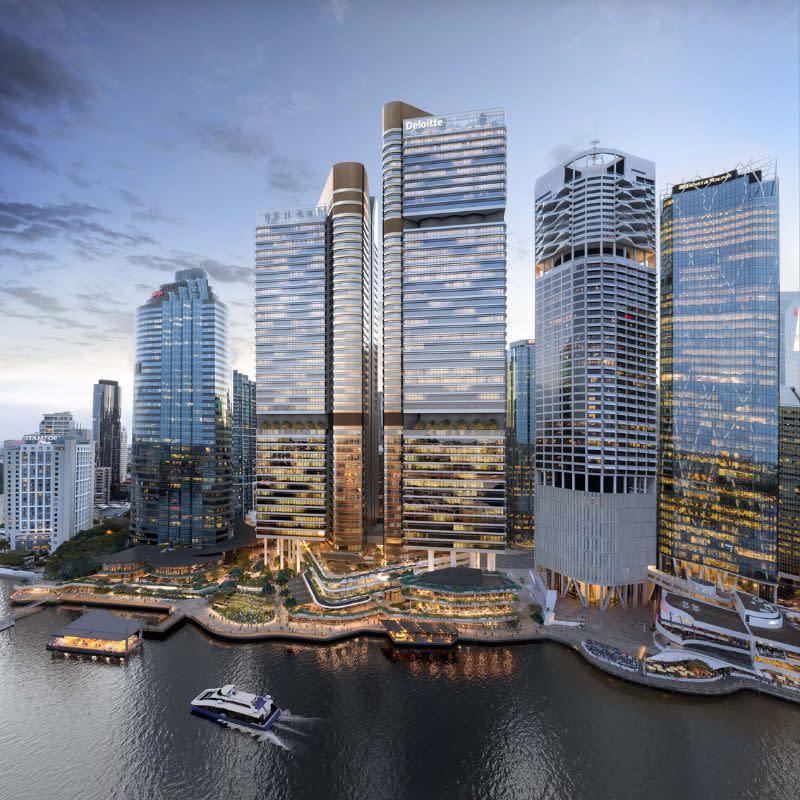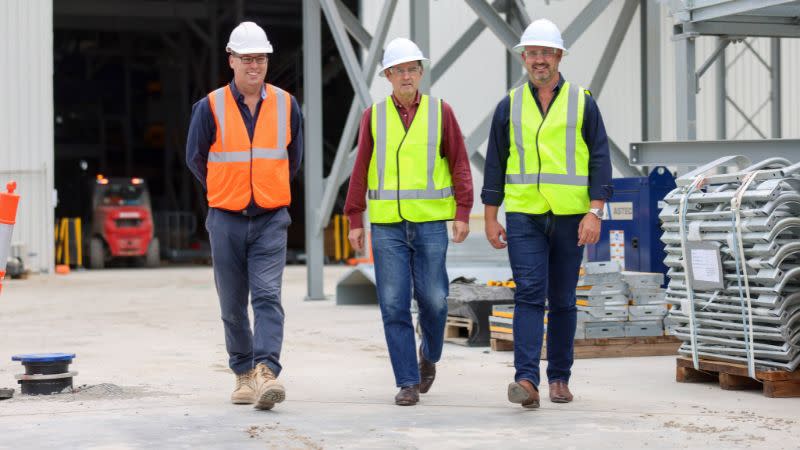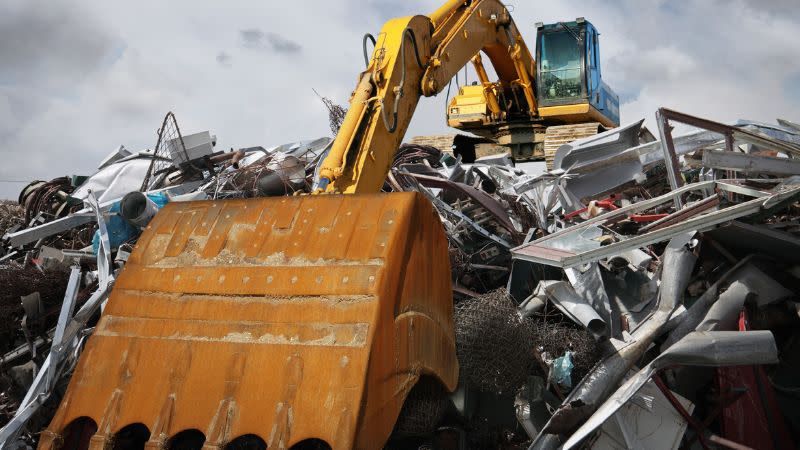Resources
Newsletter
Stay up to date and with the latest news, projects, deals and features.
Subscribe
Brisbane’s Riverfront has been a hive of activity for years, but the latest place-making project is breaking the mould.
Ten months into Dexus’s Waterfront Brisbane project and the dismantling and demolition of Eagle Street Pier is complete.
While the project may currently be an empty plot, it’s what is not being left behind that is really moving the needle on the sustainability front.
Dexus project director Matthew Beasley says 97 per cent of the waste from the construction site is being recycled or reused.
Queensland has some of the lowest levels of recycling recovery rates compared to its southern counterparts, where landfill levies have in place for much longer.
But with a 25-year and almost $65-billion pipeline of infrastructure projects planned, and the most sustainable Olympic Games on the horizon in nine years, the Sunshine State is going to have to lift its game.
More than 17,000 tonnes of concrete, bricks, fill, timber and metals have already been recycled on the Waterfront Brisbane site after John Holland and subcontractors Delta and Fitzgeralds Constructions Australia sorted the materials on-site.
These materials are then transported to Pinkenba where Rino Recycling is using innovative technology to recover and recycle 97 per cent of the construction waste.

Fit-outs from the former Eagle Street Pier were also recovered and donated to charity.
In achieving sustainability goals for the future, the focus is now not only on the operational sustainability of the new building, but the disposal and reuse of the old.
“Our recycling and recovery rate has set a new benchmark and is a result of the project’s focus on circular economy outcomes, underpinned by Dexus’s sustainability strategy, while working with project partners who share our values and commitment to sustainability,” Beasley says.
Materials have been repurposed on sites including Archerfield Air Base, Port of Brisbane, the Ampol refinery at Lytton and a water treatment facility at Luggage Point.
Earlier this year Beasley announced Dexus would be “repurposing material from the site” with Brisbane-based design studio Five Mile Radius to create furniture to be installed at the Waterfront Brisbane precinct.
“Repurposing material from the site was a central part of the project’s sustainability objectives,” Beasley said.
“We have been able to harness leading-edge technology and innovative supply chains to minimise the development’s environmental impact.”

John Holland Group has been on site since January this year to deliver Brisbane’s tallest office tower that aims to “deliver a global-standard business and leisure destination”.
The project is targeting a 6-Star Green Star rating and is designed to be carbon neutral.
Dealing with the huge volume of construction waste recycling requires a big and innovative solution, something Rino Recylcing director Todd Pepper is working on.
Pepper says the state-of-the-art recycling plant at Pinkenba is under construction and when operational in November it will be the largest integrated construction and demolition waste recovery facility in the country by volume.
“This new facility is close to the CBD, the largest generator of construction and demolition waste, and recycled products can be produced at the same facility, reducing double handling,” he says.
“This will be a great social infrastructure that other construction companies can follow in Dexus’s footsteps in achieving sustainable outcomes through the construction process.”
Pepper says most of the materials recovered had been concrete, which is easier to recover and recycle. But they are now contending with concrete mixed with polystyrene, which Pepper says they will be able to separate out once the new recycling plant is operational next month.
In 2020–2021, Australia produced about 25.2 million tonnes, or 980 kg per capita, of building waste. About 80 per cent of this waste is recovered, but up to 97 per cent can be recycled, according to Pepper.
Recycled concrete aggregate is widely used in road base, while bricks and asphalt are also readily recycled and reused.
Earlier this year the CEFC committed $75 million in debt finance to help fund Rino Recycling’s flagship construction and demolition recycling facility at Pinkenba.

The $89-million facility—one of Australia’s largest for throughput volume under one roof—will be able to process more than a million tonnes of C&D waste annually, including concrete, excavation material, vacuum waste and skip bin waste, diverting a significant amount of resources from landfill.
“This investment helps provide a solution to Australia’s growing waste stream and accelerates our transition to a circular economy by deploying best-in-class technology to further develop our recycling sector,” CEFC chief executive Ian Learmonth says.
“It offers an opportunity to deliver important infrastructure to Queensland and comes at a critical time for Brisbane, with the city on the cusp of a construction boom in the countdown to the 2032 Olympics.”
Rino Recylcling’s Todd Pepper says the introduction of landfill levy and the commitment to almost double it by 2027 is providing certainty for the investment in the technology.
“This facility will not only help South-East Queensland achieve its Olympics commitments but preserve a number of its finite resources by recycling existing materials in the system first,” he says.
The new facility will help address the under-developed C&D recycling sector in South-East Queensland, using leading global recycling technology by Turmec from Ireland and CDE from Northern Ireland.
Waterfront Brisbane is due to be completed in 2028.
You are currently experiencing The Urban Developer Plus (TUD+), our premium membership for property professionals. Click here to learn more.
